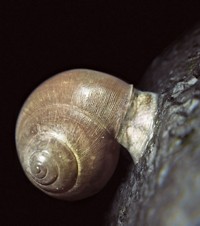Advertisement
Grab your lab coat. Let's get started
Welcome!
Welcome!
Create an account below to get 6 C&EN articles per month, receive newsletters and more - all free.
It seems this is your first time logging in online. Please enter the following information to continue.
As an ACS member you automatically get access to this site. All we need is few more details to create your reading experience.
Not you? Sign in with a different account.
Not you? Sign in with a different account.
ERROR 1
ERROR 1
ERROR 2
ERROR 2
ERROR 2
ERROR 2
ERROR 2
Password and Confirm password must match.
If you have an ACS member number, please enter it here so we can link this account to your membership. (optional)
ERROR 2
ACS values your privacy. By submitting your information, you are gaining access to C&EN and subscribing to our weekly newsletter. We use the information you provide to make your reading experience better, and we will never sell your data to third party members.
Materials
Pitcher Plant Inspires Super Slippery Surface
Materials Science: Omniphobic material mimics carnivorous plant’s slick surface structure
by Bethany Halford
September 21, 2011
When insects land on the walls of Nepenthes pitcher plants, they soon meet their doom, thanks to a surface that causes them to slip into the digestive juices at the plant’s bottom. By mimicking the pitcher plant’s slick means of gathering a meal, Joanna Aizenberg and colleagues at Harvard University have created an omniphobic material that repels simple liquids such as water and hydrocarbons, complex fluids such as crude oil and blood, and even solids. Ants, for example, can’t scale its slippery surface (Nature, DOI: 10.1038/nature10447).

“We envision the use of these surfaces for biomedical fluid handling, for fuel transport, and as a surface that repels ice and can therefore be used to reduce energy in refrigeration,” Aizenberg tells C&EN.
The so-called slippery liquid-infused porous surfaces, or SLIPS, are self-lubricating, self-cleaning, and self-healing, and they can be made transparent. “We believe these features make the material an ideal candidate not only for everyday environments, but there is clearly potential for using it in areas where very high or very low temperatures are encountered or where pressures are very high” and where surface integrity is therefore hard to manage. Aizenberg notes. SLIPS, for example, could be used to make self-cleaning, antifouling coatings for vessels used in deep-sea or polar exploration.
“Nature has so many different, very smart solutions that can be used in engineering and technology,” Aizenberg says of her strategy to make a material based on the carnivorous pitcher plant. The unusual surface of these plants features a microtextural roughness that locks in a lubricating layer of water. This water repels oils on insects’ feet, so they slide to their end.
SLIPS mimic this structure but also improve upon it by repelling liquids of all types. Their omniphobic structure is made of a porous network of Teflon nanofibers that are infused, like a sponge, with an oil- and water-repelling fluid, such as 3M’s Fluorinert FC-70 or DuPont’s Krytox oils. But a broad range of other materials can be used, Aizenberg says. It’s the layer of fluid on the surface of the network that makes SLIPS so slippery. And when there’s any damage to the material, fluid instantly flows into cracks or dents, making the material self-healing.
Aizenberg tells C&EN that in comparison to other liquid-repelling surfaces, such as those inspired by lotus leaves, the technology is inexpensive. “SLIPS are really easy to make and would be quite cost-effective,” she says.
The project moved “unexpectedly smoothly” Aizenberg says, but the group did have to figure out a way to keep the nanofiber networks from drying out so the material will maintain its omniphobicity for months and years. They did this by coupling the SLIPS with a reservoir of fluid, making the material self-replenishing.
Philippe Brunet, an expert on omniphobic materials at France’s University of Paris Diderot, says he is impressed by the innovative strategy. “In my opinion, this study does not simply represent an improvement in liquid-repellent surfaces, but rather a revolution in the field,” he says. “I am sure many researchers reading this paper would think as I do: ‘I wish I would have thought about these surfaces before.’ ”






Join the conversation
Contact the reporter
Submit a Letter to the Editor for publication
Engage with us on Twitter